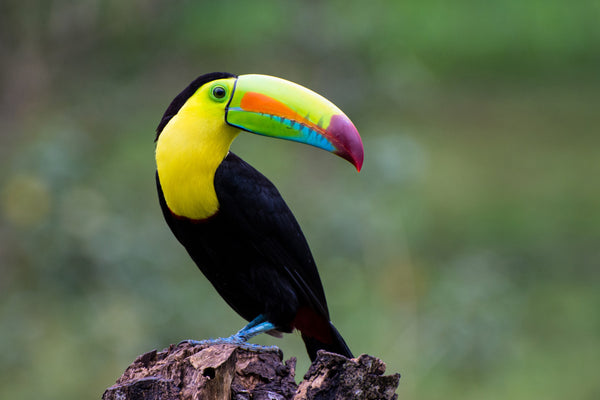7 biodiversity Hotspots around the world That You Should Know
The world is filled a stunning range of biodiversity that thrive in vastly different climates and weather conditions. An area is considered a biodiversity hotspot when it has a high concentration of endemic (found nowhere else) species. Unfortunately, many of these areas are under pressure from human activity. There are 36 biodiversity hotspots around the world that contain 44% of the world’s plants and 35% of land vertebrates.
Top threats to global biodiversity include climate change, habitat loss, overexploitation, invasive species, and pollution. It’s absolutely vital to protect and restore biodiversity hotspots because they provide unique habitat conditions that may not exist anywhere else on earth.
Read below to learn more about some of the world’s top biodiversity hotspots!
7 biodiversity hotspots around the world you should know:
1. Madagascar
Madagascar is the world’s second-largest island after Indonesia and is over 150 million years old. Filled with rare species of plants and animals, scientists believe 85% of the island’s animals and 90% of the plants are endemic, which means they can only be found there. Threats to the island’s biodiversity include decreased rainfall, deforestation, and the illegal wildlife trade.
2. Brazil’s Atlantic Forest Region
Stretching along the eastern coast of Brazil, the Atlantic Forest region is considered Latin America’s most important region for biodiversity aside from the Amazon Forest. The Atlantic Forest contains 250 species of mammals, 340 species of amphibians, 1,023 species of birds and 20,000 species of trees. With only 12% of the original forest remaining, the top threats to this region include illegal logging and climate change.
3. The California Floristic Province
Located along North Americ’as Pacific Coast, California’s Floristic Province is home to some of the tallest trees in the world as well as over 8,000 plant species. The coastline’s unique trees include the giant sequoia and the coastal redwood, both of which are endangered. Threats to California’s biodiversity include rising sea levels, habitat loss, pollution, and urbanization.
4. South Africa’s Cape Floristic Region
This region of South Africa contains 9,000 species of plants, 69% of which are found nowhere else in the world. Notable plants in the Floristic Region include the king protea (South Africa’s national flower), the Red disa, and Clanwilliam cedar. The main threats to South Africa’s Floristic Region include agricultural and urban expansion as well as ecosystem degradation.
5. The Philippines
The Philippines is commonly referred to as “Asia’s Pearl of the Orient” due to the island’s rich culture and beautiful landscape. The Philippines is home to more than 52,000 species, making up 70% of the world’s biodiversity. This biodiversity hotspot contains some of the highest concentrations of critically endangered species on the planet, with threats including invasive species, land degradation, and climate change.
7. Thailand
If you’ve ever vacationed in Thailand, you know why this beautiful country has made the list! As one of the most biodiversity-rich countries in Southeast Asia, Thailand contains 15,000 plant species, making up 8% of the global total. Unique animal species that call Thailand home include the Asian Elephant, Sunda Pangolin and Indochinese Tiger. Thailand’s rich biodiversity is threatened by deforestation due to agricultural practices, illegal timber harvesting, and increased floods and draughts due to climate change.
8. The Tropical Andes
This region extends from western Venezuela to northern Chile and Argentina, and includes portions of Colombia, Ecuador, Peru, and Bolivia. The Tropical Andes contains the highest number of plant and animal species, making it the leader of the 36 biodiversity hotspots. Of the 30,000 species of plants found in The Tropical Andes, roughly 50-60% of these plants are considered endemic. It also contains 570 species of mammals, with the majority being rodents and bats. Threats to the tropical Andes include mining, overexploitation of species and deforestation.







